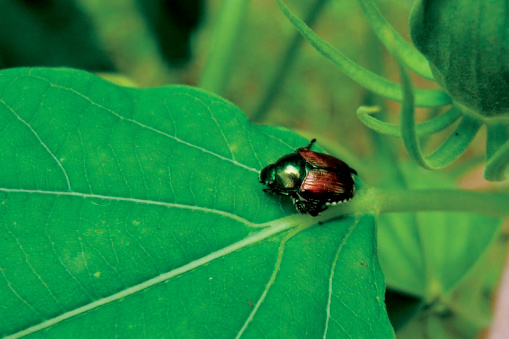
Our little gardeners have witnessed the devastation of a tomato worm, but still succumb to its caterpillar cuteness. The worm’s detailed spots and vivid V-shaped stripes outline a bright green body as large as my ring finger. The kids can’t bring themselves to eliminate these cartoon-like creatures, which seem fit for a role in Alice in Wonderland.
As a compromise, they moved the first tomato worm of the season from our garden to an empty ice cream container. They named him Timothy Ray. They decorated his home with sticks and flower blossoms. They fed him small tomatoes and leaves. The kids know that I tolerate their actions, as long as Timothy stays away from our tomato cages.
Lightning bugs usually receive the most insect-specific attention from our kids every summer, but not this one. In July, they helped remove camouflaging green worms that turned my garden cabbage to Swiss cheese. In June, they swatted at Japanese beetles as they picked raspberries. And we started carrying anti-itch cream in my purse a month earlier than usual for bug bites.
Entomologists call this summer a “good” one for insects, which thrived in the mild winter. Relatively speaking that is “not good” for farmers and gardeners, or even motorcycle drivers. We wondered how anyone could enjoy the open road this summer without a windshield. The flight of hard-shelled Japanese beetles pelted our minivan like pea gravel.
At the doorstep of “Beetle Mania,” experts warned us to scout our farm’s crops for alarming populations of Japanese beetles and other plant predators like armyworms, black cutworm, corn rootworm, earworm and stink bugs. Collectively, they eat leaves, clip ear silks, dine on roots, devour corn kernels, introduce plant diseases and make plants more susceptible to infection. University researchers define economic thresholds that outline the amount of insect infestation that warrants treatment. Here and around the state, some fields met that threshold.
In our yard alone, we have thrown time and money at the beetle battle, having invested in milky spore, set traps, applied insecticide and hand-flicked Japanese beetles into buckets of soapy water. The bugs two years ago killed our young cherry tree and last year destroyed about 80 percent of our home’s raspberry crop. My grandma this season called upset and seeking advice after she found they had turned her signature cannas to lace. It’s beyond frustrating to work so hard and have insects ravage your season’s work, whether cannas or field corn.
Meanwhile, we pay attention to beneficial insects, too, and continue a concerted effort to attract monarch butterflies. Our guys purposely have left milkweed alone in feasible grassy spaces on the farm for monarchs to feed and proliferate. We also transplanted some milkweed to our yard, with hopes to bring more butterfly beauty to Illinois. The tomato worms, however, better hope the kids find them first.




